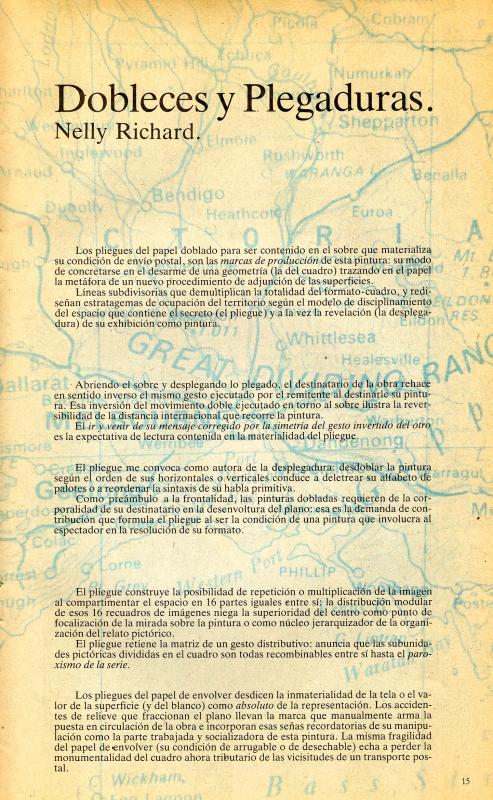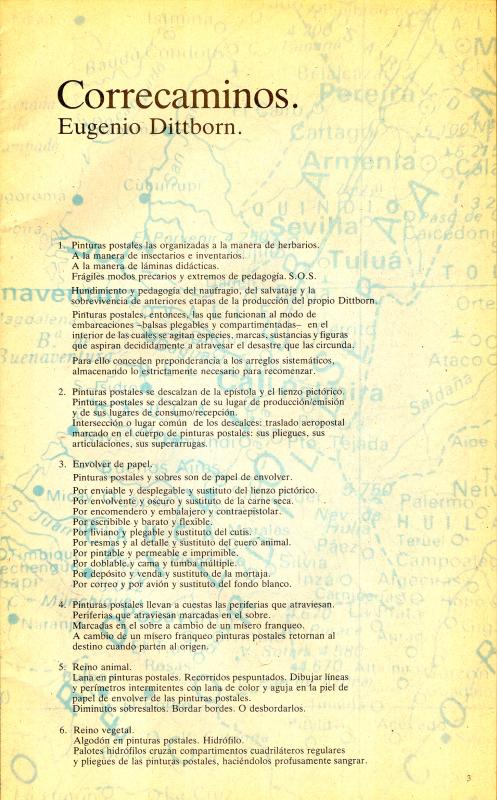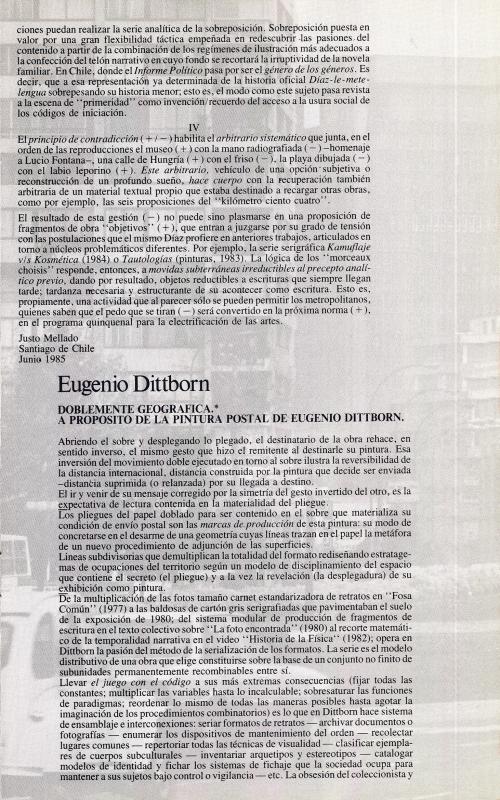In his essay “Una política” the poet Gonzalo Muñoz (b. 1956) discusses just three formal aspects of the work of Eugenio Dittborn (b. 1943), since there have been multiple interpretations of his work, prompting Muñoz to focus on such a limited range. This essay appeared in Pinturas postales de Eugenio Dittborn (1985), a publication edited by Francisco Zegers, which assembled an early collection of different reactions to Dittborn’s work. The other contributors to the publication, in addition to Muñoz, were the theorist and cultural critic Nelly Richard (b. 1948), the poet Gonzalo Millán (1947–2006), the intellectual Pablo Oyarzún (b. 1950), and Dittborn. [See some of these texts in the ICAA Digital Archive: “Por miradas” (doc. no. 735231) by Millán; “Protocollage de lectura” (doc. no. 735197) by Oyarzún; “Dobleces y plegaduras” (doc. no. 735222) by Richard, and “Correcaminos” (doc. no. 735214) by Dittborn].
The publication appeared a year after Dittborn started producing this particular kind of work that was inspired by and involved the idea of travel. In 1984–85 his Aeropostales (Airmail Paintings) were exhibited in Cali (Colombia), Sydney (Australia), and Buenos Aires (Argentina). Once the works had returned, he had two exhibitions in Santiago (Chile): 12 Pinturas Aeropostales (Galería Sur, September) and 6 Pinturas Aeropostales (Galería Bucci, October).
Dittborn’s Pinturas Aeropostales, or Airmail Paintings, were painted on large sheets of paper or fabric that were then folded and tucked into envelopes, which are also part of the work. When the envelope is ready the Aeropostal is mailed to the exhibition site, where it is unfolded and hung on the wall. The envelopes are exhibited along with the paintings to show evidence of the mailing process: the postage stamps, recipient’s address, and return address. The creases that form a grid of rectangles on the fabric and the lack of a frame or stretcher are two of the characteristics that set this genre apart from traditional painting. Airmail Paintings usually consist of screenprinted images taken from newspapers, magazines, comics, or drawing manuals, and children’s drawings, lines, and blots. They can include faces and different iconographies taken from a wide range of sources, including police files. Fabrics used in these works can overlap and be patched and have seams. Dittborn has continued to produce works of this nature to this day. They are among the experimental works created by several artists during the mid-1980s as a way to critique traditional painting. Nelly Richard explores this subject in depth in her essay “Return to the pleasurable” (doc. no. 743686); Richard also discusses the journeys taken by Dittborn’s Airmail Paintings to Sydney and Buenos Aires in her essay “Eugenio Dittborn: Doblemente geográfica. A propósito de la pintura postal” (doc. no. 734740).





